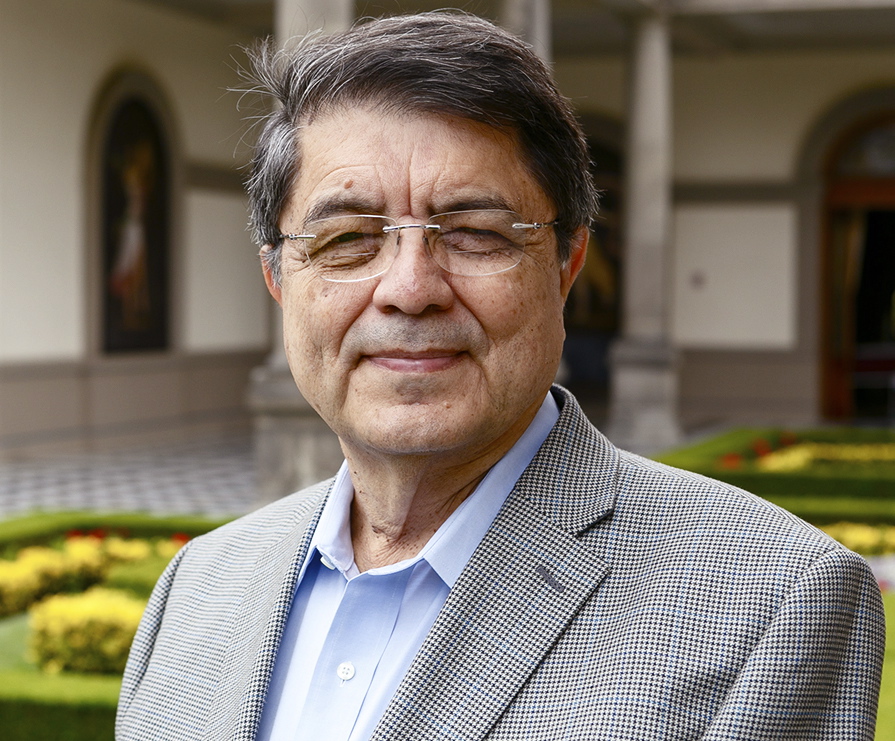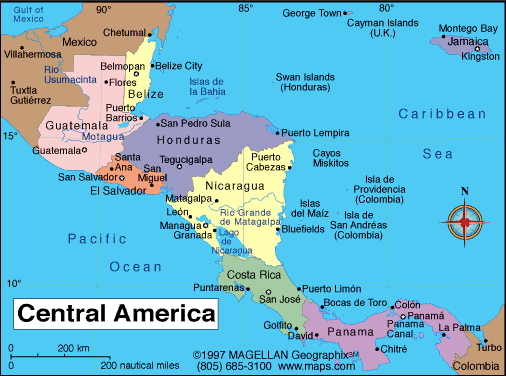Note: The author is WINNER of the Alfaguara International Novel Award, RECIPIENT of the International Prize for Human Rights (Bruno Kreisky Foundation), WINNER of the Order of Merit of the Federal Government of Germany, and WINNER of the 2014 Carlos Fuentes Prize for Literary Creation in Spanish.
“Rosalio Usulutlan…editor-in-chief of [Leon, Nicaragua’s] El Cronista newspaper, quit his seat at the end of the first screening of the MGM film Payment Deferred starring Charles Laughton and Maureen O’Sullivan [released in 1932]…In the article he was planning to write the next morning, Usulutlan intended to warn his readers of the dangers inherent in the film’s plot: merely by attending the cinema, unscrupulous persons would be able to learn how to prepare lethal poisons…the method was clearly shown on the screen.”
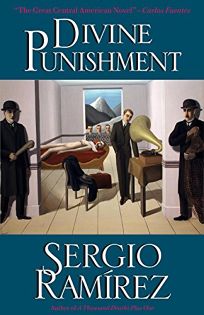 Within months of the release of the 1932 Charles Laughton film Payment Deferred, the wife of a Guatemalan attorney and three other people associated with him in Nicaragua, would die in Leon under circumstances which suggest poisonings similar to those in the popular American film. Later that year, the attorney, Oliverio Castaneda, former first secretary to the Guatemalan legation in Nicaragua, would be awaiting trial and possible sentencing for these deaths, though all the evidence is circumstantial. Writing a novel based on the real case and its investigation in 1932-1933, Nicaraguan author Sergio Ramirez recreates what has been described as “the most celebrated criminal trial in Nicaraguan history,” a case which Ramirez uses to illustrate the conditions and social mores of the country as Anastasio Somoza Garcia is laying the groundwork for his eventual dictatorship in Nicaragua, which would begin in 1936.
Within months of the release of the 1932 Charles Laughton film Payment Deferred, the wife of a Guatemalan attorney and three other people associated with him in Nicaragua, would die in Leon under circumstances which suggest poisonings similar to those in the popular American film. Later that year, the attorney, Oliverio Castaneda, former first secretary to the Guatemalan legation in Nicaragua, would be awaiting trial and possible sentencing for these deaths, though all the evidence is circumstantial. Writing a novel based on the real case and its investigation in 1932-1933, Nicaraguan author Sergio Ramirez recreates what has been described as “the most celebrated criminal trial in Nicaraguan history,” a case which Ramirez uses to illustrate the conditions and social mores of the country as Anastasio Somoza Garcia is laying the groundwork for his eventual dictatorship in Nicaragua, which would begin in 1936.
Fellow author Carlos Fuentes declares that with this book “Sergio Ramirez has written the great novel of Central America,” which he describes as incorporating a “heart of darkness…the fullness of comedy, and the imminence of tragedy.” Fuentes compares Ramirez to Flaubert in technique, and calls this book “a true microcosm of Central America…[with] the action [also] reverberating in Costa Rica and Guatemala.”
Ramirez (1942 – present) is not “just” the author of this novel, however. He has a history which gives him unique insights into the political situation in Nicaragua over the years, and his background shows in his literary attention to detail and his observations of the tensions and jealousies between the government, the police, and the army. A liberal who opposed the Somoza government of Anastasio Somoza Debayle, the son of Anastasio Somoza Garcia (who came to power during the time of the novel), he was actively involved in planning and bringing about the Sandinista political revolution in Nicaragua in 1979, and from 1985 – 1990, he served as Vice President of the country during the presidency of Daniel Ortega. Somehow, during the 1980s, Ramirez, who grew estranged from Ortega and his policies, also managed to write this novel, considered his masterpiece, but thirty years would pass before the book would be translated into English and published for the first time for an American audience by McPherson & Company, which released it in May, 2015.
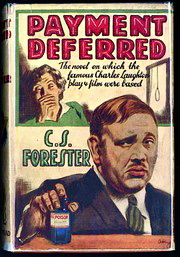
Payment Deferred, a 1932 film from the book by C. S. Forester, starred Charles Laughton and Maureen O’Hara, and paralleled the action of this novel.
The imagery of the Charles Laughton and Maureen O’Hara film Payment Deferred, which opens the book, infuses the story of the Nicaraguan deaths, attributed to Oliverio Castaneda. Documents and reports (and even gossip) presented by journalists, physicians, police, the judicial authorities, the army, attorneys, and the voracious public, are presented here for the reader, as they were in 1932-3, when the Castaneda case was the biggest topic of conversation in Nicaragua. As in the case with Charles Laughton in the film Payment Deferred, the killer in the real case, assumed by all to be Castaneda himself, is believed to have used a quick-acting poison, killing, first, his wife, and later two members of the family with whom he is living. And while the film focuses on “payment deferred,” the novel focuses instead, perhaps ironically, on “divine punishment,” its Spanish title.
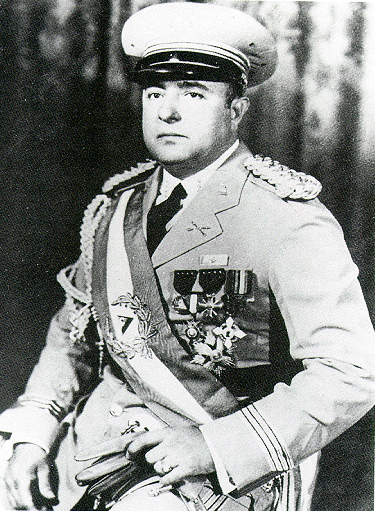
Anastasio Somoza Garcia, the dictator who, with his sons, ruled Nicaragua for over thirty-five years, is preparing his takeover as this novel unfolds.
The story is not complicated and relies on the oldest of motives. Oliverio Castaneda, a Guatemalan who has come to Nicaragua to work as first secretary for the Guatemalan legation, is a married man who is very ambitious and always in need of money. Befriending the wealthy Don Carmen Contreras, for whom he eventually works in the water supply business, Castaneda and his wife manage to get an invitation to move into the Contreras home, Casa Prio, where Castaneda quickly begins flirting with the two Contreras daughters, Matilde, in her early twenties, and Maria del Pilar, who is fourteen. It is not long before Castaneda’s wife Marta begins to become a hindrance to his long-term plans, though he is careful to be publicly attentive to her while also courting Contreras’s daughters. When wife Marta falls ill and dies, the cause is officially “complications from blackwater fever,” brought on by a previous case of malaria, though many believe that she died from strychnine poisoning. Soon after that, Matilde and Don Carmen Contreras also suffer attacks of some similar “illness” – like blackwater fever. Accounting frauds are discovered in the books of Don Carmen’s business, connected to Castaneda’s tenure there, and Castaneda is additionally implicated in the death of his friend Rafael Ubico.
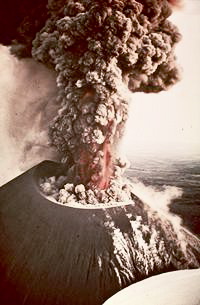
The eruption of Nicaraguan volcano Cerro Negro occurred five days after the conclusion of the novel. The ironies and the symbolism are unmistakable.
Many depositions from the time are revealed here, all of which implicate Castaneda, and some of which are connected to Anastasio Somoza, who was then in the army. Letters and other hidden transactions also implicate Castaneda. As author Ramirez presents the legal case, consisting of many depositions, legal briefs, medical reports, and statements from “witnesses,” he builds both the structure of the novel and the case against Castaneda. Faced with almost five hundred pages of “evidence” clearly indicating Castaneda’s overwhelming guilt, the reader cannot help but wonder if Castaneda is being framed from on high, possibly the victim of an elaborate plot. The hostilities among the various governmental groups involved and the motivations for fraud among some of them raise the possibility, at least, that Castaneda may, in fact, be a victim. Sergio Ramirez, in this unusual novel of Nicaraguan social, political, and judicial issues wants the reader to think beyond the obvious. Originally published in 1988 in Nicaragua, it is as fresh and relevant now as it was then.
Note: The spirited and often subtle translation representing many different points of view must have been challenging for translator Nick Caistor with Hebe Powell, but they met those challenges and succeeded in creating a detailed but natural-sounding translation.
ALSO reviewed here: THE SKY WEEPS FOR ME
Photos, in order:
The photo of author Sergio Ramirez appears on http://www.fnpi.org/
The book cover of C. S. Forester’s Payment Deferred, which became the basis for the Charles Laughton film in 1932, is seen on http://www.rottentomatoes.com/m/payment-deferred/
Anastasio Somoza Garcia, who became President of Nicaragua from 1936 – 1956 is shown on http://www.rottentomatoes.com/
The eruption of Nicaraguan volcano Cerro Negro occurred five days after the conclusion of the novel. The ironies and the symbolism are unmistakable. http://www.mnh.si.edu
The map of Central America with the relationship between Guatemala, Honduras, Nicaragua, and Costa Rica is found here: http://www.infoplease.com/
ARC: McPherson & Company
